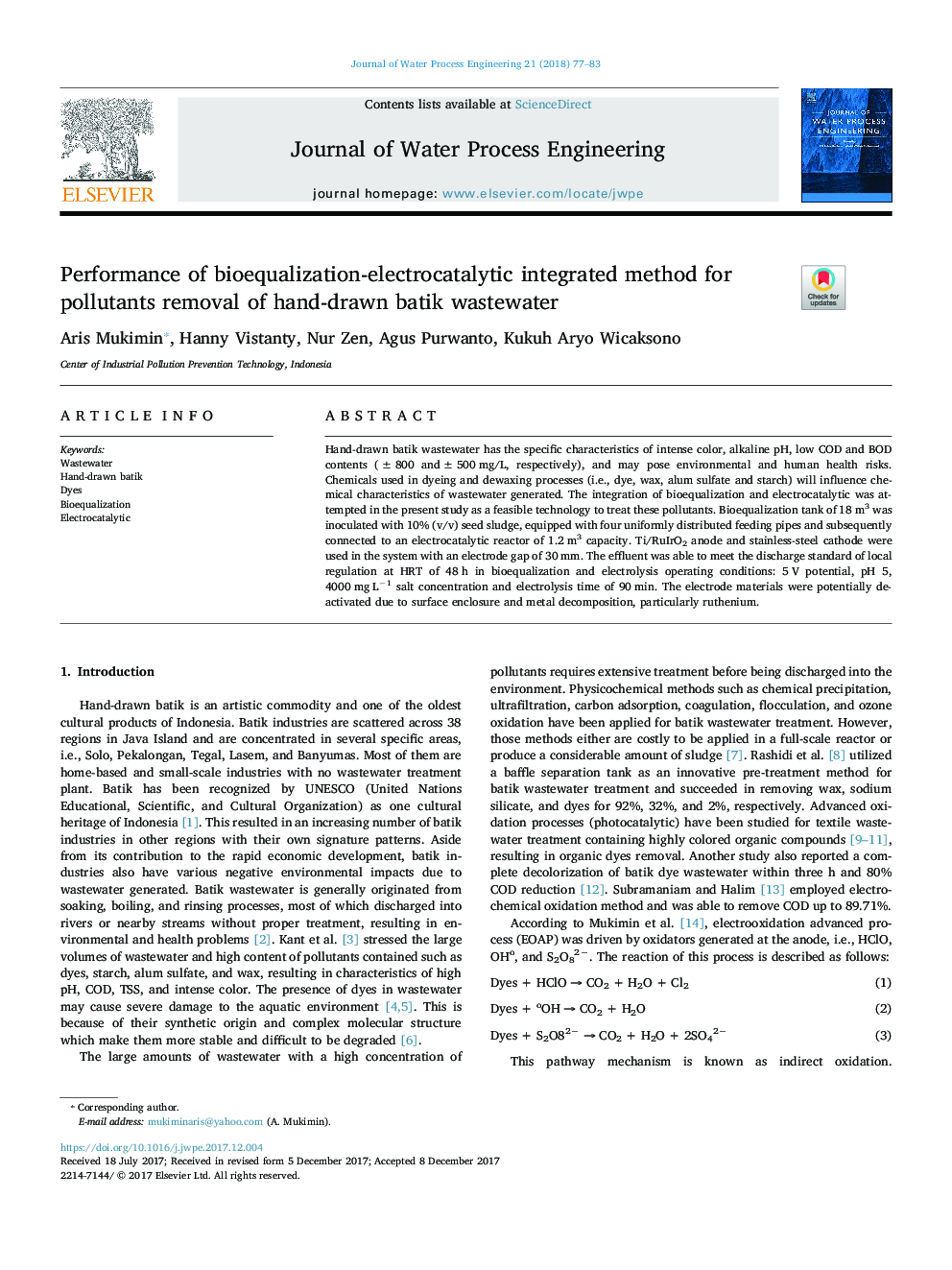| Article ID | Journal | Published Year | Pages | File Type |
|---|---|---|---|---|
| 6672026 | Journal of Water Process Engineering | 2018 | 7 Pages |
Abstract
Hand-drawn batik wastewater has the specific characteristics of intense color, alkaline pH, low COD and BOD contents (±800 and ±500 mg/L, respectively), and may pose environmental and human health risks. Chemicals used in dyeing and dewaxing processes (i.e., dye, wax, alum sulfate and starch) will influence chemical characteristics of wastewater generated. The integration of bioequalization and electrocatalytic was attempted in the present study as a feasible technology to treat these pollutants. Bioequalization tank of 18 m3 was inoculated with 10% (v/v) seed sludge, equipped with four uniformly distributed feeding pipes and subsequently connected to an electrocatalytic reactor of 1.2 m3 capacity. Ti/RuIrO2 anode and stainless-steel cathode were used in the system with an electrode gap of 30 mm. The effluent was able to meet the discharge standard of local regulation at HRT of 48 h in bioequalization and electrolysis operating conditions: 5 V potential, pH 5, 4000 mg Lâ1 salt concentration and electrolysis time of 90 min. The electrode materials were potentially deactivated due to surface enclosure and metal decomposition, particularly ruthenium.
Keywords
Related Topics
Physical Sciences and Engineering
Chemical Engineering
Chemical Engineering (General)
Authors
Aris Mukimin, Hanny Vistanty, Nur Zen, Agus Purwanto, Kukuh Aryo Wicaksono,
